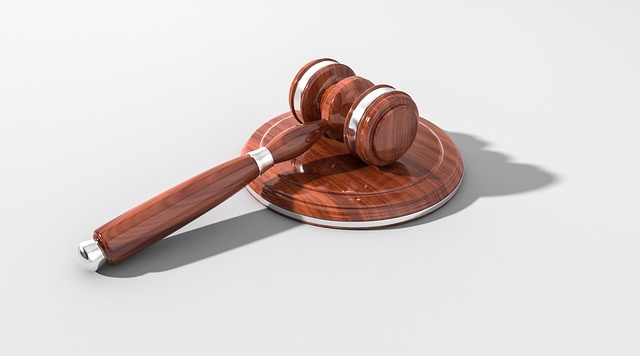The Oregon Child Welfare Court is a critical entity dedicated to protecting vulnerable children through meticulous legal processes, addressing abuse, neglect, and dependency cases. This guide explains the court's procedures from initial reports to hearings and dispositions, emphasizing the balance between safeguarding children and supporting families. Key parties involved include parents, guardians, the Oregon Department of Human Services (DHS), judges, and support services, all working together to ensure the best interests of the child. Understanding these court procedural insights is essential for navigating the system effectively.
Oregon’s child welfare court system plays a pivotal role in ensuring the safety and well-being of vulnerable children. This comprehensive guide delves into the intricate procedural framework that governs these critical cases. From understanding the court’s jurisdiction and the key parties involved to navigating the step-by-step process, this article offers valuable insights. We explore rights and resources for all stakeholders, best practices for effective communication and document management, and strategies to overcome common challenges. Whether you’re a parent, advocate, or legal professional, this guide provides essential knowledge for navigating Oregon’s child welfare court system.
- Understanding Oregon Child Welfare Court Jurisdiction and Cases
- – Scope of Oregon child welfare court
- – Types of cases handled by the court
- – Key parties involved in the court process
Understanding Oregon Child Welfare Court Jurisdiction and Cases

In Oregon, the Child Welfare Court plays a pivotal role in ensuring the safety and well-being of vulnerable children within the state. Its jurisdiction encompasses a wide range of cases involving child abuse, neglect, and family situations that require intervention to protect minors. Understanding the court’s authority and the procedures it follows is essential for all parties involved, from social workers to parents, guardians, and legal representatives. Navigating Oregon’s child welfare court requires a comprehensive guide to help individuals and families understand their rights and obligations.
This court process involves meticulous steps, from initial reports of suspected abuse or neglect to emergency protective orders, dependency cases, and eventual permanency plans. Court procedures in Oregon are designed to protect the interests of children while also offering support and resources to families facing challenges. By delving into these procedural insights, individuals can better appreciate the complex nature of child welfare court and the dedication it entails in fostering a safer and more stable environment for Oregon’s youth.
– Scope of Oregon child welfare court

Oregon’s child welfare court plays a pivotal role in ensuring the safety and well-being of vulnerable children within the state. Its scope encompasses a range of cases involving alleged child abuse, neglect, or dependency. The court procedures in Oregon are designed to protect the rights of both children and families while navigating complex legal issues. By following a structured guide on court procedures, individuals involved in these cases can better understand their roles and navigate the process effectively.
For those seeking insights into navigating court procedures, Oregon’s child welfare court offers a comprehensive framework. This includes initial hearings, where allegations are assessed, to subsequent trials that determine the future of the child’s placement and care. Understanding the court process is essential for families, attorneys, and advocates alike, as it enables informed decision-making and ensures the best interests of the child are at the forefront of these critical proceedings.
– Types of cases handled by the court

The Oregon Child Welfare Court handles a variety of cases involving the safety and well-being of children within the state. These cases encompass situations where a child is alleged to be abused, neglected, or at risk of harm. This includes instances where law enforcement, social workers, or concerned individuals file petitions seeking protective orders, temporary custody, or permanent guardianship. The court’s primary focus is on ensuring the best interests of the child are prioritized while navigating complex family dynamics and legal processes.
Navigating court procedures in Oregon Child Welfare Court requires a comprehensive understanding of the legal framework. The process involves initial hearings, where the court assesses the situation and determines if there is sufficient cause to proceed with further actions. This is followed by fact-finding hearings, where evidence is presented to establish the veracity of allegations, and finally, dispositional hearings to decide on long-term solutions for the child’s care and placement. A guide through these court procedures ensures that all parties involved—from social workers to parents and guardians—are equipped with the knowledge to effectively participate in the legal process, ultimately contributing to positive outcomes for Oregon’s vulnerable youth.
– Key parties involved in the court process

In Oregon, the child welfare court process involves several key parties who work together to ensure the best interests of the child are met. The primary participants include the child’s parents or guardians, who are responsible for the child’s care and well-being but may require support or intervention from the court. Next, there are the Oregon Department of Human Services (DHS) Child Welfare Division, charged with protecting and supporting vulnerable children and families. Key professionals within DHS include caseworkers, who assess family situations and develop plans to address any safety concerns.
Judges play a critical role in the court procedures of Oregon child welfare courts. They are responsible for overseeing hearings, making decisions on temporary or permanent custody arrangements, and ensuring that all parties have a fair opportunity to present their cases. The court also relies on various support services, such as lawyers representing both the state and individual families, therapists, medical professionals, and other community resources to collaborate in the best interest of the child. Understanding these court procedural insights is crucial for navigating the Oregon child welfare court system effectively.
